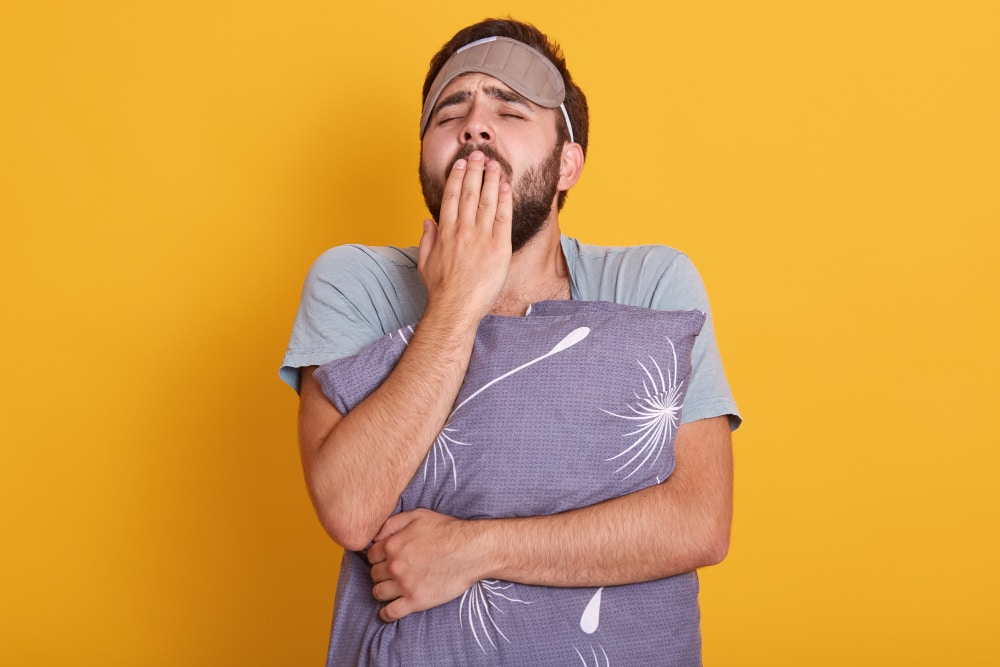Sleep apnea is a serious condition that can have a huge impact on your quality of life. It can cause fatigue, headaches, and snoring, and it can even be fatal if left untreated.

But what do you do if you have to travel for work or pleasure? How do you manage the symptoms of sleep apnea while still having an enjoyable getaway? In this article, we’ll explore some tips for traveling with sleep apnea.
From using portable CPAP machines to choosing the right accommodations, we’ll discuss how to sleep on a planewith anxiety and how you can make your travels safe and comfortable despite your condition.
What Is Sleep Apnea?
Sleep apnea is a condition in which a person experiences pauses in their breathing or shallow breaths while sleeping. These pauses can last for several seconds to minutes and can occur multiple times throughout the night. Sleep apnea can lead to daytime sleepiness, difficulty concentrating, and mood swings. It can also increase the risk of developing hypertension, heart disease, and stroke.
It can cause people to suffer from fragmented and poor quality sleep, leading to daytime sleepiness, fatigue, and other issues like headaches. People with untreated sleep apnea often have an increased risk for high blood pressure, heart attack, stroke, and other cardiovascular diseases. This condition is more commonly seen in men over 40 years of age who are overweight but is seen in all ages across the spectrum of people.
If you think you have symptoms of this condition it is important to speak to your healthcare provider about having a diagnosis and deciding on the best approach for treatment.
How Does Sleep Apnea Affect Travelers?
If you suffer from sleep apnea, traveling can be a challenge. This can lead to fatigue, headaches, and difficulty concentrating.
How to sleep on a plane while traveling?There are a few things you can do to make traveling with sleep apnea easier. First, make sure to pack your CPAP machine if you use one. This will help you get the restful sleep you need. You should also plan your travel so that you have time to rest and recuperate. And finally, make sure to tell your travel companions about your condition so they can be understanding and supportive.
Sleep apnea is a serious sleep disorder that occurs when a person’s breathing is interrupt while they sleep. People who suffer from this condition can stop breathing over 30 times an hour and in severe cases, up to hundreds of times. This can lead to disrupted sleep; fatigue, headaches and even certain medical problems if left untreated. Although anyone can suffer from sleep apnea, it’s typically more common in the elderly and men with larger necks due to their higher risk of excess tissue around their throats. Treatment usually involves lifestyle changes such as avoiding alcohol before bed or using continuous positive airway pressure (CPAP) machines during sleep.
Tips For Dealing With Sleep Apnea While Traveling
Sleep apnea can be a difficult condition to deal with while traveling. Here are a few tips to help make the experience more manageable:
- Bring your CPAP machine with you and make sure it is in working order before you leave. This will be your lifeline while away from home.
- Make sure to pack all of the necessary supplies, including extra filters and batteries.
- Don’t forget to pack your pillow! A comfortable pillow will help you get a good night’s sleep, even in unfamiliar surroundings.
- Talk to your hotel staff about your sleep apnea and what accommodations they can provide to make your stay more comfortable.
- Keep a cool, calm environment in your room as much as possible. A fan can help circulate air and white noise machines can block out disruptive sounds.
How To Sleep On a Plane With Sleep Apnea
If you have sleep apnea, traveling can be a challenge. Here are some guide on sleeping on a plane with sleep apnea.
- Make sure to bring your CPAP machine with you when you travel. This will help you sleep better on the plane and prevent any episodes of sleep apnea.
- If you cannot bring your CPAP machine with you, try using a nasal spray or mouthpiece to help keep your airway open while you sleep.
- Drink plenty of fluids during your flight so that you stay hydrated. This will help to keep your throat from drying out and becoming blocked.
- Avoid drinking alcohol or taking sedatives before flying, as these can worsen sleep apnea symptoms.
- Try to get up and move around the cabin every few hours during your flight to keep your blood flowing and prevent stagnation in your chest and lungs.
Conclusion
If you suffer from sleep apnea, travel can be a daunting prospect. However, with a little bit of preparation and the right resources, it doesn’t have to be.
By taking the necessary steps to identify your sleep apnea triggers while traveling, consulting with your doctor before making any drastic changes to your routine, and using CPAP machines when available.
You can minimize the effects of sleep apnea on your trip and make sure that you get quality rest for each night away from home.

